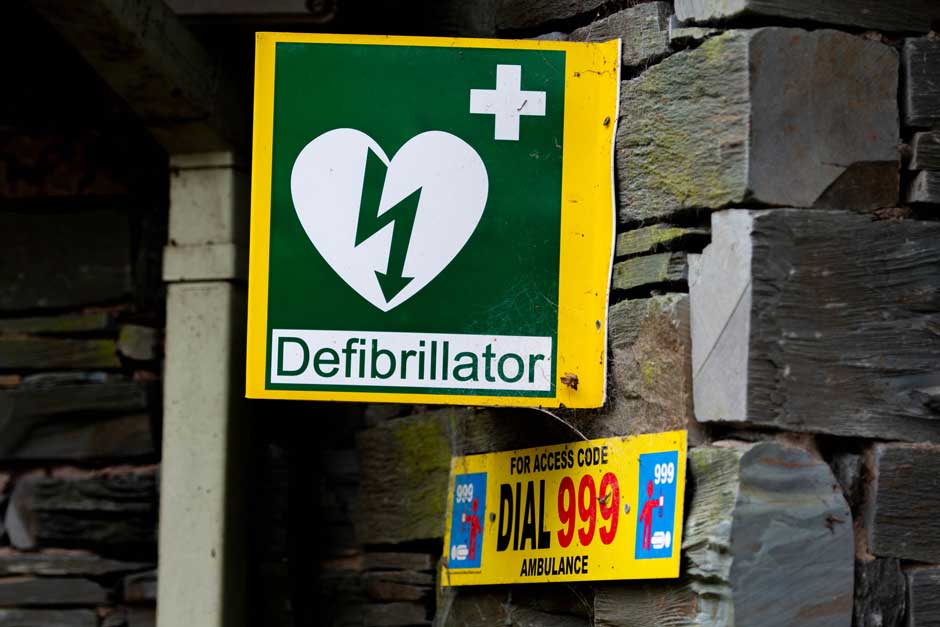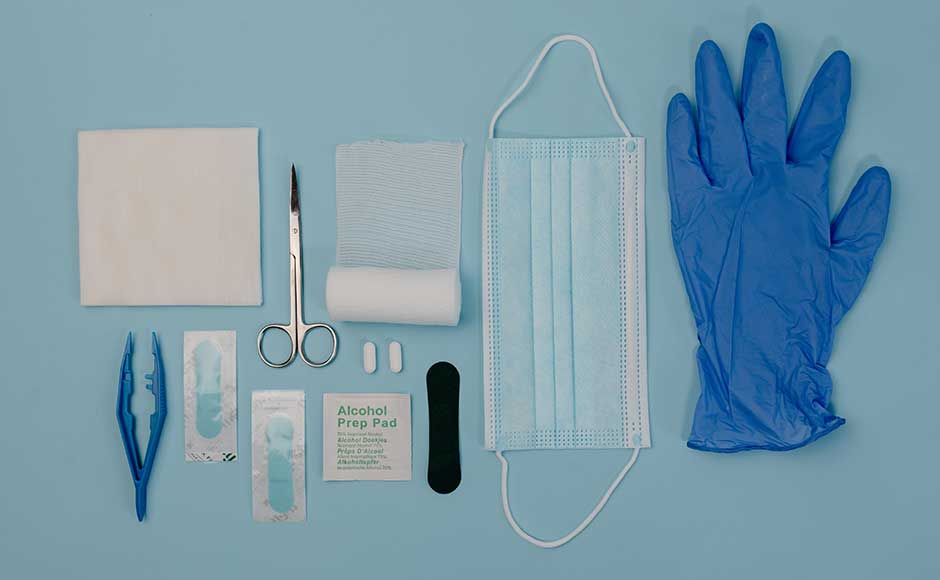First aid

In the event of injury or sudden illness, failure to provide first aid could result in a casualty's death. The Health and Safety (First aid) Regulations 1981 therefore state that employers should ensure that an employee who is injured or taken ill at work receives immediate first aid attention.
These regulations apply to all workplaces, including those with fewer than five employees.
The regulations do not place a legal duty on organisations to make first aid provision for non-employees such as the public. However, the Health & Safety Executive strongly recommends that non-employees and all visitors and service users are included in an assessment of first aid needs and that provision is made for them.
The main requirement of the Health and Safety (First aid) Regulation 1981 is for duty holders (in this case, the Charity Trustees of the congregation) to undertake a first aid needs assessment and individually consider their congregation's first aid measures and provisions to protect employees and anyone else using the building(s) and ground(s).
As a minimum, a low-risk workplace such as a small office should have a first aid box and a person appointed to take charge of first aid arrangements, such as calling the emergency services if necessary.
Organisations must provide information about first aid arrangements to their employees, groups or organisations using the facilities and buildings for regular activities.
Automated External Defibrillators (AED)
A defibrillator is a small handheld, battery-powered piece of life-saving first aid equipment. It works by administering a high-energy electrical shock designed to return the heart back into a normal rhythm and can massively improve the chances of recovery for a victim of a suspected cardiac arrest. Although health and safety legislation does not require that you have an Automated External Defibrillator (AED) in your workplace, many churches have now either acquired an AED or allowed for one to be located at their premises for community use.
The automated defibrillators are designed so that in an emergency they can be used by anyone, even if they have not had formal training. The defibrillator gives audible step-by-step instruction to the user when the equipment is activated.
They generally have a fail-safe system which will not allow for a shock to be administered where a pulse is detected and, as such, the user is unlikely to shock the injured party in error or cause further distress and harm. AEDs are considered safe for use by the general public or any first responder to the casualty.
Although not required, full training in the use of an AED is likely to make the user more confident and is now an integral part of the syllabus for first aid at work courses. Congregations should ensure that the use of AEDs is covered in any first aid training provided.
The Church of Scotland has invested, promoted and agreed to publicly host AEDs on many church premises as part of an ongoing community initiative with the charity St John Scotland, which has placed more than 100 defibrillators in Edinburgh and is continuing to work with communities across Scotland to increase public access to the life-saving devices as a greater community initiative.
The congregation(s) should ensure that the AED placed at their location has been suitably registered with the National Defibrillator Network and has been added to the central database that provides the Scottish Ambulance Service with the nearest location and status of defibrillators that may be accessed for use by the public.
Defibrillator maintenance

AEDs are not expected to require any ongoing maintenance tasks to keep them operational, other than replacing expired batteries, electrode pads and other consumable items (razor, airway adjuncts and plastic gloves). Even then, the shelf life of unused units is usually 3-5 years, so any maintenance tasks are infrequent if the device remains on standby mode and unused status.
All manufacturer’s instructions and guidance on maintenance and battery replacement intervals should be followed and recorded accordingly. Some manufacturers may provide a replacement AED while one is removed for servicing or repair, and the process for this should be clarified and clearly understood by the Charity Trustees.
All currently supplied AEDs perform regular self-checks and if a problem is detected it will be indicated by the AED unit’s instrument panel. In most cases, they show this by a warning sign or light visible on front of the machine.
Defibrillator monthly monitoring check
Where AED’s are not monitored and maintained by a third party, the appointed responsible person for the AED should complete a monthly check of the equipment to ensure no system failings or warning signs are indicated. If any issues are identified via this check or any ad-hoc instances outside of the monthly check cycle i.e. noticeable damage reported by a member of the congregation, immediate action is required to resolve and ensure the lifesaving equipment is at its optimal and ready state (see AED monthly checklist template in the documents section below).
Where a hard-wired, heated outdoor safe storage system for the AED is fitted, the wiring and/or power supply should also form part of the monthly check and monitored accordingly for any visible damage to the wire housing/protective covers etc, particularly where it is mounted to conductive steel railings or likely to come into contact with the general public or building users.
In the event of a fault being identified with the equipment and rendered ‘Out of Use’, the appointed responsible person is required to update the National Defibrillator Network’s online register, which in turn updates the National Defibrillator location database.This ensures the Scottish Ambulance Service are aware the equipment at your location is rendered ‘Out of Use’ and they can direct the public or first responders to an alternative AED site whilst the faulty unit is not in operation. Once the equipment has been replaced, the appointed responsible person must update the online register to confirm the equipment is rendered operable again.
Where a fault is identified with the equipment or it is removed for servicing AND there is an arrangement in place for a manufacturer to provide a replacement, if the replacement is not available at the time of removal, the appointed responsible person is required to update the online register of the status.
Likely reasons to update the National Defibrillator Network:
- Power failure
- Faulty
- Vandalism
- Theft
- Being replaced
- Inaccessible
If this task is delegated to individuals within the congregation, allowances must be made to ensure that the checks are not neglected during absence on holidays, sick leave etc.
First aid kit
All first aid kits/boxes should be placed where they can be seen (not obstructed from view), easily identified and kept free from dust and damp conditions.
They should have the universally identifiable signage, which is a white cross on a green background.
The contents of your first aid kit should be based on your first aid needs assessment.
As a general guide the basic contents should include:

- Individually wrapped sterile plasters of assorted sizes
- Sterile eye pads
- Individually wrapped triangular bandages, preferably sterile
- Safety pins
- Large and medium-sized sterile, individually wrapped, unmedicated wound dressings
- Disposable gloves
This is a basic contents list; you may add other contents dependant on your needs assessment and the likelihood of certain injury types at your location.
Congregations that handle and serve food should ensure they have food-safe plasters in the contents.
When picking a first aid kit/box, look for British Standard accreditation (BS) 8599. By law, your kit doesn’t have to meet this standard but you should check it contains the basic contents and what you’ve identified in your needs assessment.
Maintaining or replacing a first aid kit
Check your kit regularly. Many items, particularly sterile ones, are marked with expiry dates. Replace expired items, disposing of them safely. If a sterile item doesn’t have an expiry date, check with the manufacturer to find out how long it can be kept. For non-sterile items without dates, you should check that they are still fit for purpose.
First aid needs assessment
What is ‘adequate and appropriate’?
A first aid needs assessment is required in order to decide what provision is necessary. This assessment should consider the circumstances of your congregational workforce and the hazards and risks that may be present in the day-to-day activities being carried out in the church buildings.
The completed risk assessment can also be used to assist with identifying hazards and risk considerations in the needs assessment template.
In assessing the first aid needs for your congregation, the health and safety-appointed representative should consider:
- The nature of the work and other activities undertaken e.g., ground maintenance and machinery used by staff
- Workplace hazards and risks (including specific hazards requiring special arrangements)
- The nature of activities taking place at church buildings
- The work patterns of your staff and suitable first aider provision across varying operating times
- Holiday and other absences of those who will be first aiders and appointed persons
- Your congregation’s history of accidents and injury.
You may also need to consider:
- The needs of travelling, remote and lone workers
- The remoteness of your buildings from emergency medical services and likely response times
- Whether your employees work on single or multi-occupancy sites
- First aid provision for non-employees (e.g. groups and lets using the buildings who may not have a first aider)
The first aid needs assessment should also consider whether trained first aiders are required and what should be included in a first aid box. The contents required will depend on the types of activities taking place within your congregational buildings and the likelihood of having to deal with a certain type of injury.
Congregational health and safety representatives, the safety committee and the first aider(s) should carry out an assessment of first aid needs to determine what to provide in line with the activities and the likely risks associated with the activities undertaken within the church buildings.
First aid rooms should be made available where the first aid needs assessment deems that a room should be available. It is unlikely that a first aid room would be a requirement for a congregation. Health and safety-appointed representatives should seek further advice from the General Trustees should they believe a first aid room is required.
First aid provision must be ‘adequate and appropriate’ in the circumstances. This means that you must provide sufficient first aid equipment (first aid kit), facilities and personnel at all times. In considering these factors, Charity Trustees should be in a position to maintain a basic record of required first aid provision as shown below. This provision should be reviewed annually or following an incident.
Record of first aid provision
| First aid personnel | Required (Y/N) | Number required |
|---|---|---|
| Appointed person | ||
| First aider - Emergency first aid at work | ||
| First aider - First aid at work | ||
| Additional first aid skills (specify) |
| Equipment/facilities | Required (Y/N) | Number required |
|---|---|---|
| First aid kit | ||
| Automated external defibrillator | ||
| First aid room |
Reporting accidents

The Reporting of Injuries, Disease and Dangerous Occurrence Regulations 2013 (RIDDOR) set out a list of incidents that must be reported. Charity Trustees should ensure that any RIDDOR-reportable incident, near miss or unsafe condition is reported through the HSE online Incident Reporting form. For any other specific injuries, please visit the HSE website or contact the General Trustees Health & Safety team for advice and guidance.
RIDDOR reportable:
- Fatality
- Fractures, other than to fingers, thumbs and toes
- Amputations
- Any injury likely to lead to permanent loss of sight or reduction in sight
- Any crush injury to the head or torso causing damage to the brain or internal organs
- Serious burns (including scalding) which:
- Covers more than 10% of the body
- Causes significant damage to the eyes, respiratory system or other vital organs
- Any scalping requiring hospital treatment
- Any loss of consciousness caused by head injury or asphyxia
- Any other injury arising from working in an enclosed space which:
- Leads to hypothermia or heat-induced illness
- Requires resuscitation or admittance to hospital for more than 24 hours
Charity Trustees should ensure that any accident that is reportable to the HSE through RIDDOR is communicated to the General Trustees as soon as possible.
This information can also help the congregation identify accident trends and possible areas for improvement in the control of health and safety risks. It can be used for reference in future first aid needs assessments. These records may also be helpful for insurance and investigative purposes if required.
Review of first aid provision

Congregational health and safety representative(s) should periodically review their first aid needs with the designated first aid representative, particularly after any operating or structural changes, to make sure provision remains appropriate.
To help with this process, we recommend keeping a record of the incidents dealt with by first aiders and/or the appointed health and safety person(s).
It is sensible for the congregations to provide first aiders and appointed persons with a book in which to record incidents they attend. Any such book should be kept in accordance with the requirements of the organisation’s data protection policy.
Where there are a number of first aiders working for a single congregation, it would be advisable for one central book to be used, though this may not be practicable across sites with additional buildings and uses.
Records must include:
- Date, time and place of the incident.
- Name and job/group or association of the injured or ill person.
- Details of the injury/illness and what first aid was given.
- What happened to the person immediately afterwards (for example, went back to work, went home, went to hospital).
- Name and signature of the first aider or person dealing with the incident.
Tablets and medication
The provision of first aid does not include giving tablets or medicines to treat illness.
The only exception to this is where aspirin is used when giving first aid to a casualty with a suspected heart attack.
In accordance with currently accepted first aid practice, it is recommended that tablets and medicines should not be kept within the first aid box. They should be stored in a lockable cabinet, drawer or container and in some cases in a locked container within a refrigerator if storage instructions state this.

Some staff carry their own medication that has been prescribed by their doctor (eg an inhaler for asthma). If an individual needs to take their own prescribed medication, the first aider's role is generally limited to helping them to do so and contacting the emergency services as appropriate. However, this does not apply to the administration of prescription-only medication specified in Schedule 19 of the Medicines Regulations 2012, where this is for the purpose of saving life in an emergency. e.g. Adrenaline 1:1000 up to 1 mg for intramuscular use in anaphylaxis.
Where a first aid needs assessment identifies that a lifesaving prescribed medication may be required to be administered in an emergency for a specific staff member, the employer should consider providing the workplace first aiders with additional training in the use of any such treatment.